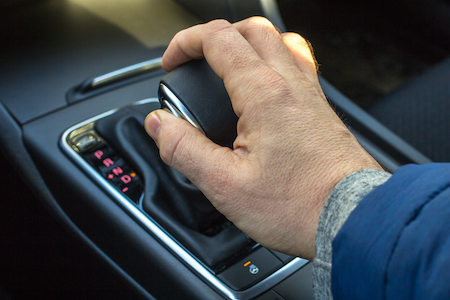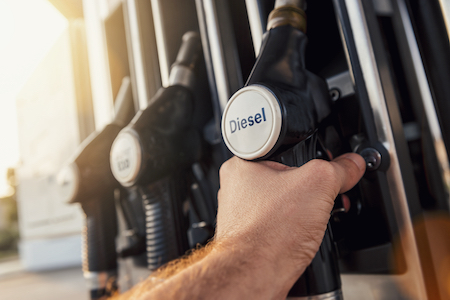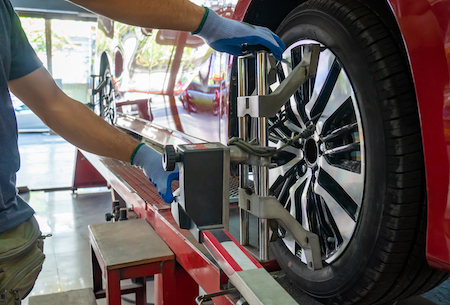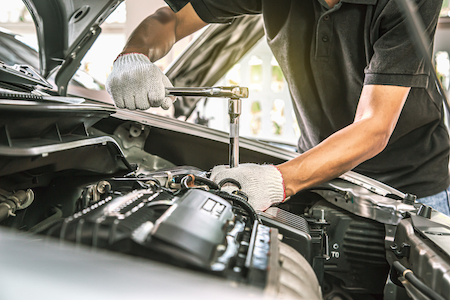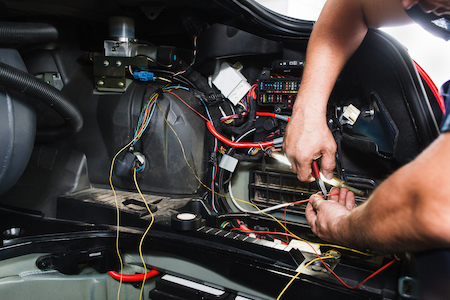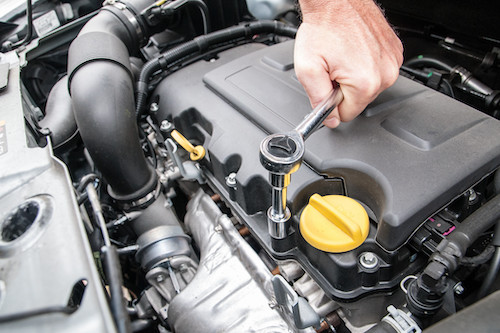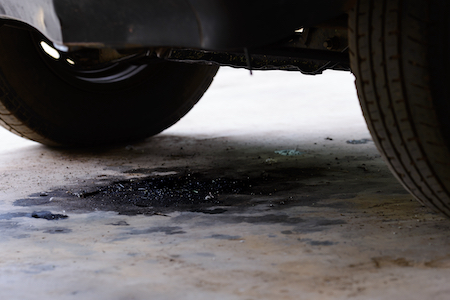The transmission is one of the most important components of today’s vehicles. Without it, there would be no way to transfer power from the engine to the wheels.
Like other parts of a vehicle, when something goes wrong, your car won’t operate as it should. In some cases, it can stop you in your tracks.
Luckily, there are early warning signs of transmission failure. Catch it early and it will be an easy repair. Put off the repair, and you risk expensive repairs or complete failure.
How a transmission works
A transmission ensures that power moves from the engine to the wheels.
There are a variety of car transmissions available, some are automatic while others are manual. While it once was common to control the transmission by using a stick-shift inside the car, more cars today operate with an automatic. Select which gear you want, and the transition occurs automatically for you.
A transmission enables the gear ratio between the drive wheel and the engine to adjust and help the car speed up or slow down. When the car comes to a complete stop, the transmission disconnects the engine from the drive wheels so that the engine can idle without powering the wheels. Depending on which gear you’re in determines the direction: park, forward, or reverse.
For a manual transmission, a clutch pedal and a shifter are used to change gears. The driver has to select the proper gears by engaging or disengaging the clutch. Automatic transmissions power this process to occur automatically within the transmission.
What are the early warning signs of transmission failure?
While a vehicle’s transmission is designed to operate smoothly throughout the process, as parts wear out, you’ll start to notice small changes in the way the system handles.
Noises
When you first buy your car, spend some time getting used to the way it performs. It’s important to engage all your senses through this process, including what you hear, what you smell, and what you see.
Often, noises are your first warning sign. Depending on the problem, you’ll start to hear things that weren’t there before. A click. A scrape. A squeak. It also can change depending on the function – moving into reverse may provide a different noise than picking up speed.
A transmission consists of multiple components, of which any of them can fail and cause a disruption in the system. Transmission problems are most likely associated with a clunking, buzzing, or whining sound due to the nature of the parts.
Burning smell
In order for the transmission to operate properly, it has transmission fluid that keeps it lubricated and in motion. Fresh transmission fluid has a sweet or tart smell. But if it overheats, leaks, and runs low, it takes on an entirely different smell.
If you notice a burning smell as you operate your vehicle, it could be low transmission fluid. Something within the system is burning too hot, which increases the friction, and leads to corrosive activity inside the engine.
The moment you notice this smell, schedule an appointment right away.
Refusal to switch gears
With a manual transmission, this is easily noticed when you press down on the clutch, and the shifter won’t budge. You push, and yet it simply won’t allow you to move between gears.
An automatic might be a little less noticeable, but listen closely. You’ll hear it as you drive. You might also notice it as you try to move from park to drive.
The key is not to force the gears into place. This can come from a variety of problems, including electronics that have gone bad to low or dirty transmission fluid. Rather than take a chance on further damaging parts, it’s best to let a mechanic look at it and determine where the problem lies.
Slipping gears
Like refusal to switch gears, slipping gears can cause scary situations. Imagine being on the highway, and your transmission suddenly alters what gear you’re in. It can lead to dangerous situations.
Over time, gears simply wear out. Slipping gears often stems from normal wear and tear, which causes them to no longer engage properly, and slip in and out of sync.
Jerking, grinding, or shaking sensation
When gears don’t operate as designed, you’ll notice it in the way your vehicle performs.
You’ll hear the gears grind on a manual transmission as you try to change gears.
You’ll experience hesitation with an automatic as it attempts to engage, yet fails.
You may feel your vehicle jerk or shake as you speed up and slow down, depending on how the gears connect.
Once you notice this, pay attention to the sensation. Then share it with your mechanic, who will better understand where to start the evaluation process for your vehicle.
Leaking fluid
Pay attention to what occurs underneath your vehicle. Leaking transmission fluid is quite recognizable.
When your transmission fluid is fresh and new, it has a relatively clear pink color. As your transmission fluid ages, becomes dirty with contaminants, it changes to a deep red or brown. A dark brown color signifies it’s been overheated.
Transmission fluid is what lubricates the gears and keeps the components working well, and stops them from overheating. It also acts as a hydraulic fluid for creating gear engagement. A leak lessens the amount of fluid in the system and will cause overheating, and eventually, a total breakdown.
Check engine light
Dashboard lights are a modern day convenience to give you plenty of warning when something is wrong. It’s the best and earliest indicator that your engine isn’t operating the way it should.
Every system in your car has triggers and sensors that are tripped when your vehicle isn’t operating the way it should. If a problem is detected, the sensor is notified, and a light goes off on your dashboard.
Pay attention to any and all of these warning signs. They are your best indicator for a potential problem.
Catching it early can help ensure your safety, as well as prevent future problems with other systems in your car. Catch it early enough and you can also pay less in repair bills – replacing transmission fluid is much less expensive than replacing the entire transmission.
How can we help you keep your vehicle working as it should?

